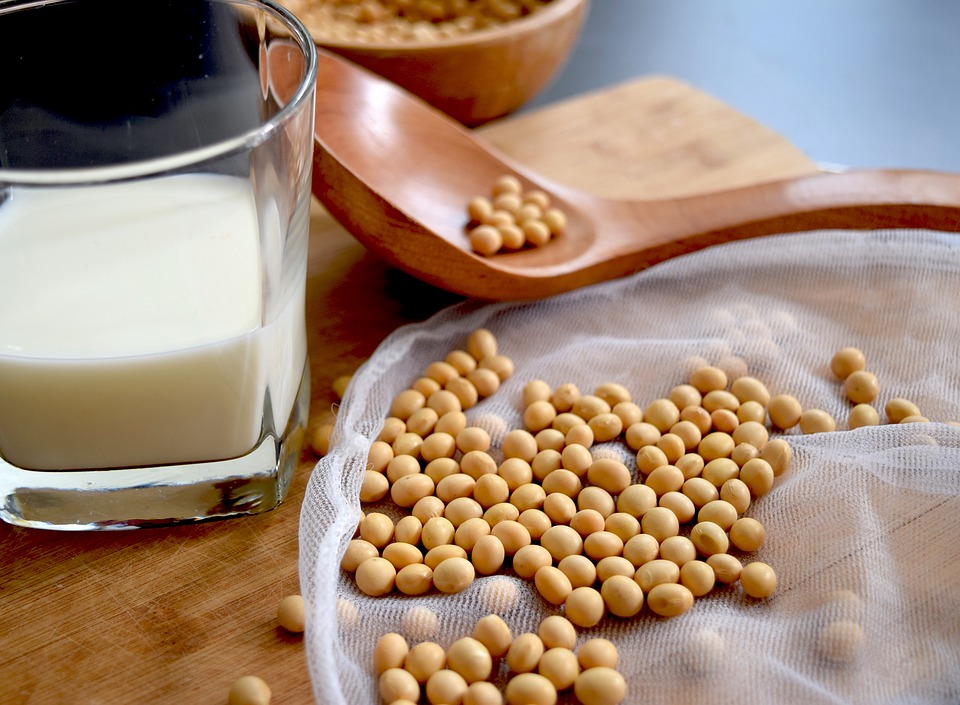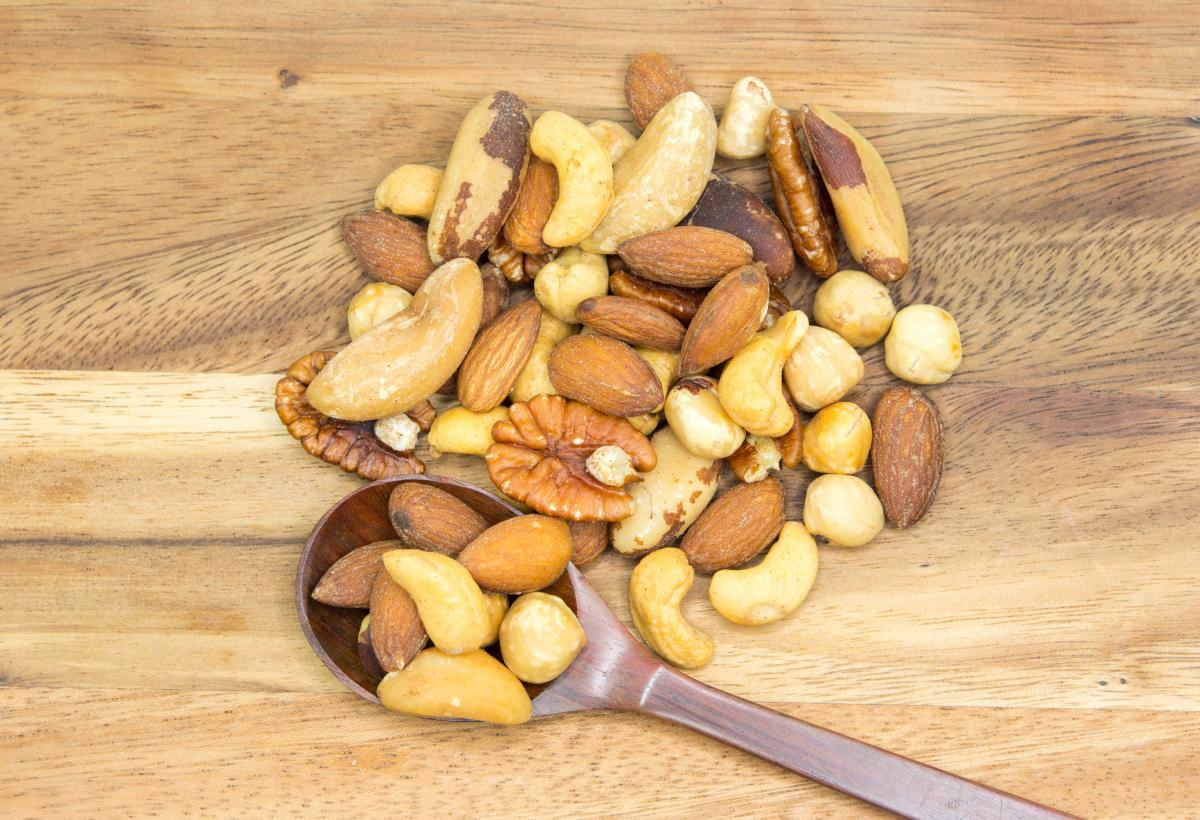Dietitian Heather Russell provides information on going vegan throughout all life stages if you or your child is affected by soya, peanut or nut allergies.
According to estimates available on the Allergy UK website, 1-10% of people are affected by food hypersensitivity, and 7% of breastfed infants in the UK are affected by food allergy. Research carried out last year suggests that over half a million Britons are eating a vegan diet, compared to an estimate of 150,000 ten years ago, so there are likely to be more and more people going vegan who are affected by food allergy.
Do you suspect a food allergy?
If you suspect a food allergy, please speak to your doctor. Without professional support, you could end up cutting out foods unnecessarily, and you might need to see a specialist.
Your doctor can refer you to an NHS allergy clinic, where tests can be carried out. There are dietitians who specialise in the diagnosis and management of food allergies. They can help you to ensure your diet is both nutritionally balanced and free from any allergen that needs to be avoided. This may involve developing your abilities to interpret food labels and plan ahead for eating out.
Soya
 Which nutrients are found in soya products?
Which nutrients are found in soya products?
You may have heard that soya is a source of good quality protein. Also, calcium-set tofu and fortified milk and yoghurt alternatives are valuable sources of calcium because both the content and absorbability are pretty good. These characteristics make some soya products particularly useful, but there many other good protein sources for vegans, as well as calcium-fortified plant milks that do not contain soya.
Soya allergy
Soya is classed as a major allergen in the EU, and must be highlighted on food labelling. It is found in a lot of food products in various forms. Some people with a soya allergy need to avoid all forms of soya. However, others may be able to tolerate, for example, soya lecithin and soy sauce. Working out your level of avoidance is important so that you can avoid unnecessary dietary restrictions.
Breastfeeding
Breastfeeding requires a few extra grams of protein daily (11g during the first six months, and then 8g) and a lot of calcium. In fact, the recommended daily calcium intake for breastfeeding is 1250mg, compared to a general recommendation of 700mg for adults. To put that into perspective, 100g of calcium-set tofu (uncooked weight) would provide about 28% of the calcium requirement for breastfeeding, and 200ml of fortified plant milk would provide 19%.
What if you have to avoid soya?
If you’re breastfeeding with a soya allergy, soya alternatives to milk and yoghurt and calcium-set tofu are off the menu. In order to hit your daily calcium target, you may need to rely heavily on soya-free fortified plant milks, such as oat or almond milk. Make sure that your daily diet contains other good sources of calcium, such as kale, pak choi, okra, spring greens, dried figs, chia seeds and almonds.
Infants
Generally, it is recommended to introduce food to babies when they are six months old, and this can include soya products. For vegan infants, unsweetened fortified soya milk can be used in cooking initially, and then offered as a drink from one year of age. This milk alternative is readily available, and may be the cheapest option too. Some varieties are a source of protein, calcium, riboflavin and vitamin B12. Calcium-set tofu and plain fortified soya yoghurt can also be offered to help ensure a good source of calcium in every meal.
What if soya has to be avoided?
If your baby has been diagnosed with a soya allergy, please ask to see a registered dietitian. They will help you ensure that your little one consumes a soya-free and nutritionally balanced diet. For example, if soya products are off the menu, it is recommended that vegan infants are given unsweetened fortified oat milk in cooking from six months to one year of age, and it can then be offered as a drink too. Oat milk contains less protein than soya, but more calories. Kale, pak choi, okra, spring greens, chopped and softened dried figs, ground chia seeds and almonds (ground or butter) are other sources of calcium that can be included in your little one’s daily diet.
11-18 year olds
Daily calcium requirements for 11 to 18 year olds are 1000mg for boys and 800mg for girls due to the demands of growth and development. Including calcium-fortified foods or calcium-set tofu in meals helps vegans in this age group to hit these targets.
What if you have to avoid soya?
Vegan teens with a soya allergy need to look for calcium-fortified plant milks that do not contain soya, such as oat or almond milk. They can also boost their calcium intake by including other good sources in their daily diet, such as kale, pak choi, okra, spring greens, dried figs, chia seeds and almonds.
Older adults
Soya products come in handy among older adults, who need to consume a bit more protein per kilogram of body weight to promote muscle health. Anyone aged 65 years or over should ensure that every meal contains a good source of protein. Soya milk and yoghurt contain more protein than other alternatives to milk products, and are therefore good choices for older vegans.
What if you have to avoid soya?
Soya is a good plant-based source of protein, but there are many others. The table below provides lots of ideas to help ensure that every meal is packed with protein:
| Type of food | Good sources of protein |
| Legumes | Beans, lentils, chickpeas, peanuts |
| Starchy foods | Buckwheat, quinoa, wild rice |
| Nuts | Cashew nuts, pistachio nuts |
| Seeds | Chia seeds, ground linseed, hemp seeds, pumpkin seeds |
| Meat alternative | Vegan Quorn, seitan made without soya |
Conclusion
Eating vegan with a soya allergy requires some additional planning, particularly for young children, teens, breastfeeding parents and people over 65. People affected should pay particular attention to their calcium intakes, and make sure they’re consuming enough protein-rich foods. However, there is no reason why people with a soya allergy can’t eat a well-balanced vegan diet. For vegans who do not need to avoid soya, it is safe, healthy, and a valuable source of nutrition for people of all ages.
Peanuts and nuts

You’ll notice in the table above that peanuts are actually a type of legume, not a type of nut (or tree nut as they are also called)! Like soya, peanuts and nuts are classed as major allergens in the EU, so they have to be highlighted on food labelling.
Which nutrients are found in peanuts and nuts?
We all need a bit of fat in our diets, and peanuts and nuts are valuable sources. For example, walnuts are rich in essential omega-3 fat. Peanuts and some types of nut are good sources of protein too. The table above shows that cashew nuts and pistachio nuts fall into this category.
Peanut and nut allergies
According to information available on the Allergy UK website, around 1 in 50 children are affected by peanut allergy. If your baby has been diagnosed with a peanut and/or nut allergy, please ask to see a registered dietitian. They will help you ensure that your little one thrives on a diet free from the allergen(s) involved.
It is rare for someone to react to both peanuts and soya. However, many people with a peanut allergy are also allergic to tree nuts, such as hazelnuts or Brazil nuts. It is possible to be allergic to only one type of tree nut, or more than one type. It is best to avoid peanuts and nuts unless you’re sure that you don’t react to certain ones. Also, even if you don’t react to peanuts and/or certain nuts, it is important to be aware that foods containing these ingredients are more at risk of contamination by the nut(s) and/or peanuts you’re avoiding.
What if you have to avoid peanuts and/or nuts?
Most people with peanut and/or nut allergies don’t react to seeds. Hemp seeds, chia seeds and ground linseed are good sources of both protein and omega-3 fat. Avocado is another healthful source of fat, and nut-free oils like olive oil can be included in your diet in small amounts.
Conclusion
If you’ve got a peanut and/or nut allergy and you’re going vegan, a bit of extra planning will ensure that you get all the nutrients you need whilst managing your allergy. For vegans who do not need to avoid peanuts and nuts, they can make valuable contributions to protein and fat intakes.
Further information
• Allergy UK’s website
• British Dietetic Association (BDA) advice about allergy testing
• BDA advice about food allergies
By Heather Russell, registered dietitian
We've recently updated our nutrition pages so that they're full of up to date information on getting all the nutrients you need as a vegan. Take a look!
The views expressed by our bloggers are not necessarily the views of The Vegan Society.

